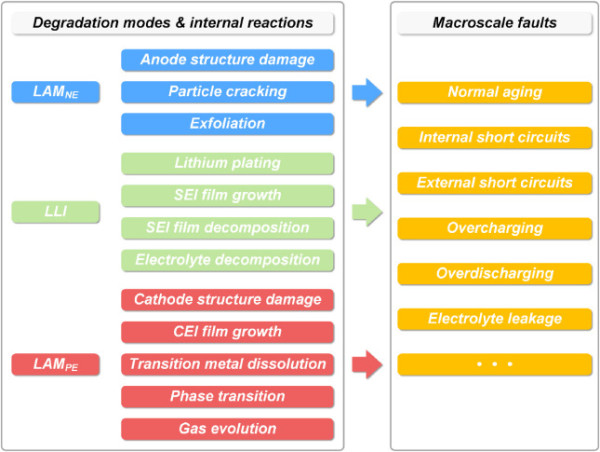GA, UNITED STATES, June 23, 2025 /EINPresswire.com/ -- As lithium-ion batteries (LIBs) continue to power electric vehicles and energy storage systems, their long-term health remains a critical challenge. A groundbreaking new method combines deep learning with physical modeling to deliver rapid, accurate degradation diagnosis at the electrode level. This innovative approach requires only 11 data points from a charging cycle, achieving reliable predictions in just 2.5 minutes. By simplifying the data needed and eliminating the need for specialized equipment, this technique offers a faster, more accessible solution to battery health monitoring—paving the way for safer, more efficient battery management in large-scale applications.
With the increasing reliance on lithium-ion batteries (LIBs) for electric vehicles (EVs) and energy storage systems, understanding and diagnosing battery degradation has become a critical challenge. Traditional diagnostic methods rely on extensive data collection and sophisticated equipment, often making real-time monitoring difficult. Accurate battery health monitoring, especially at the electrode level, is essential for predicting performance and lifespan. However, the complexity of identifying degradation modes like loss of active material or lithium inventory has limited the effectiveness of current techniques. Given these challenges, there's a pressing need for faster, more reliable methods that can provide real-time insights without requiring expensive or specialized equipment.
Published in eScience in October 2024, researchers from Beijing Institute of Technology and Mälardalen University have introduced an innovative method for diagnosing LIBs degradation. This hybrid framework combines deep learning and physical modeling, allowing rapid and reliable degradation diagnosis using only 11 data points from a charging cycle. Unlike traditional methods, which require lengthy data collection and sophisticated tools, this approach promises a significant leap in speed and accessibility. The method's adaptability across different battery chemistries and its potential for real-world applications make it a game-changer for the future of battery management.
This study tackles the complex issue of battery degradation at the electrode level by combining two powerful approaches: deep learning and physical modeling. Traditionally, battery degradation diagnosis required detailed and lengthy data from full charging and discharging cycles, making it impractical for real-time applications. The proposed method, however, can predict the polarization-free incremental capacity analysis (ICA) curves using just 11 data points collected in under 3 minutes. By training a deep learning model on charging current and voltage data, the researchers have significantly reduced the time and complexity involved in degradation diagnostics. Physical modeling then decouples the different degradation modes—such as the loss of active material in the anodes (LAMNE) and cathodes (LAMPE), and the loss of lithium inventory (LLI)—from the ICA curves. This combination of approaches allows for a more efficient and accurate understanding of battery health, which is crucial not only for ongoing battery use but also for repurposing retired batteries. The study's results suggest that this method could be used for rapid, large-scale monitoring in industries ranging from automotive to energy storage.
Prof. Rui Xiong, Director of the National Engineering Research Center of Electric Vehicles, the principal investigator of the study, emphasized, "Our approach marks a significant breakthrough in battery health monitoring. By using deep learning to predict degradation at the electrode level, we’ve made it possible to rapidly diagnose the health of LIBs with minimal data. This method can be seamlessly integrated into real-world applications, ensuring both safety and longevity in electric vehicles and energy storage systems. The ability to assess battery health quickly and accurately will be transformative, especially as the demand for sustainable battery solutions continues to grow."
The implications of this research are far-reaching. The ability to rapidly and accurately diagnose degradation in LIBs with minimal data opens up new possibilities for real-time monitoring in electric vehicles and energy storage systems. This technique could improve battery management systems (BMS), ensuring better performance, safety, and longevity of batteries. Furthermore, it holds promise for second-life battery applications by providing more reliable insights into the health of retired batteries, enabling safer and more efficient recycling and reuse. With the method's adaptability across different battery chemistries, it has the potential to revolutionize large-scale battery management in diverse industries, from consumer electronics to grid storage.
References
DOI
10.1016/j.esci.2024.100325
Original Source URL
https://doi.org/10.1016/j.esci.2024.100325
Funding Information
This work was supported by the National Key R&D Program of China (2021YFB2402002), Beijing Natural Science Foundation (Grant No. L223013) and the National Natural Science Foundation of China (Grant No. 52272359 and 52376167).
Lucy Wang
BioDesign Research
email us here
Legal Disclaimer:
EIN Presswire provides this news content "as is" without warranty of any kind. We do not accept any responsibility or liability for the accuracy, content, images, videos, licenses, completeness, legality, or reliability of the information contained in this article. If you have any complaints or copyright issues related to this article, kindly contact the author above.
![]()



